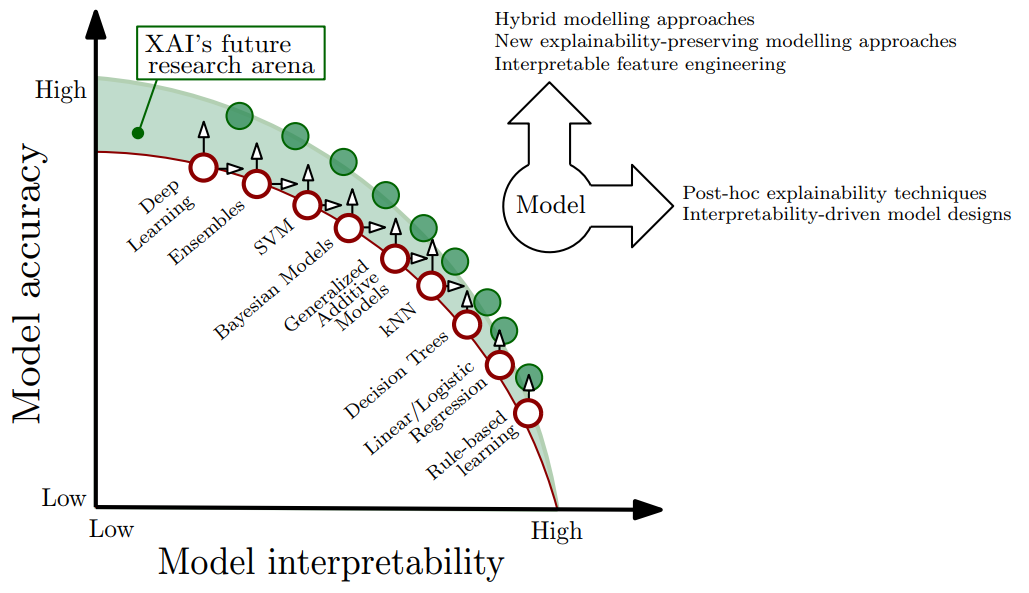Section: New Results
Tools for Understanding Deep Learning Systems
Explainable Deep Learning
Participants : Natalia Díaz Rodríguez [correspondant] , Adrien Bennetot.
Together with Segula Technologies and Sorbonne Université, ENSTA Paris has been working on eXplainable Artificial Intelligence (XAI) in order to make machine learning more interpretable. While opaque decision systems such as Deep Neural Networks have great generalization and prediction skills, their functioning does not allow obtaining detailed explanations of their behaviour. The objective is to fight the trade-off between performance and explainability by combining connectionist and symbolic paradigms [47].
|
Broad consensus exists on the importance of interpretability for AI models. However, since the domain has only recently become popular, there is no collective agreement on the different definitions and challenges that constitute XAI. The first step is therefore to summarize previous efforts made in this field. We presented a taxonomy of XAI techniques in [46] and we are currently working on a prediction model that generates itself an explanation of its rationale in natural language while keeping performance as close as possible to the the state of the art [47].
Methods for Statistical Comparison of RL Algorithms
Participants : Cédric Colas [correspondant] , Pierre-Yves Oudeyer, Olivier Sigaud.
Following a first article in 2018 [71], we pursued the objective of providing key tools to robustly compare reinforcement learning (RL) algorithms to practioners and researchers. In this year's extension, we compiled a hitchhicker's guide for statistical comparisons of RL algorithms. In particular, we provide a list of statistical tests adapted to compare RL algorithms and compare them in terms of false positive rate and statistial power. In particular, we study the robustness of these tests when their assumptions are violated (non-normal distributions of performances, different distributions, unknown variance, unequal variances etc). We provided an extended study using data from synthetic performance distributions, as well as empirical distributions obtained from running state-of-the-art RL algorithms (TD3 [84] and SAC [88]). From these results we draw a selection of advice for researchers. This study led to an article accepted at the ICLR conference workshop on Reproducibility in Machine Learning [34], to be sumitted to the Neural Networks journal.
Knowledge engineering tools for neural-symbolic learning
Participants : Natalia Díaz Rodríguez [correspondant] , Adrien Bennetot.
Symbolic artificial intelligence methods are experiencing a come-back in order to provide deep representation methods the explainability they lack. In this area, a survey on RDF stores to handle ontology-based triple databases has been contributed [97], as well as the use of neural-symbolic tools that aim at integrating both neural and symbolic representations [58].



